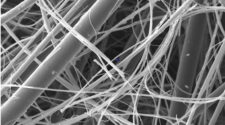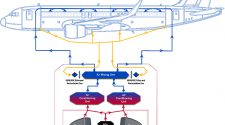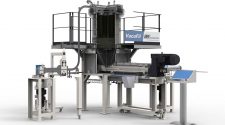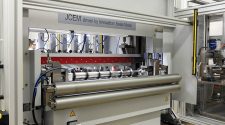An Understanding of Thermophoresis in a Filtration System Requires a Comprehensive Analysis for Effective Filtration
Thermophoresis is a phenomenon related to particle motion in a fluid due to temperature gradients. In the context of filtration, especially in the field of air filtration, thermophoresis can have an impact on filtration efficiency (may increase or decrease depends on the factors of influence). The effect of thermophoresis on filtration efficiency depends on various factors, including the size of aerosol, characteristics of the particles, the filtration medium, and the operating conditions. Here are some general points to consider:
Particle Size and Composition
Thermophoresis tends to be more significant for smaller particles. As particle size decreases, the influence of thermophoresis becomes more pronounced. Variations in filtration efficiency are anticipated with temperature fluctuations.
At elevated temperatures, heightened Brownian motion intensifies diffusive deposition of aerosol particles onto the filter. This is due to the increase in viscosity of air as we know the basics. “With increase in temperature, gas molecules attain more kinetic energy, and the rate of collision is more (Brownian motion). Hence, viscosity of gases increases with an increase in temperature. The increased activity of Brownian motion enhances the chances of particles making contact with and being captured by the filter fibers. Interestingly, a rise in temperature tends to decrease particle penetration, indicating a potential improvement in overall filtration efficiency. This reduction in penetration can be attributed to the combined effects of increased Brownian motion and potentially altered airflow patterns, but this more predominant for smaller particle size which obey only Brownian principle.
Also, the factor is considered when rise in viscosity of air with temperature could impact airflow through the filter, potentially leading to higher resistance and changes in pressure drop across the filter medium.
If there is a significant temperature difference between the air and the filtration medium, thermophoresis may become a more prominent factor.
While gravitational settling and inertial impaction of particles slows down at higher temperatures due to the increased viscosity of air, this deceleration could result in a decrease in the interception of larger particles by the filter. Larger particles may settle more slowly, affecting the overall efficiency of particle capture through interception mechanisms. Assuming that the flow through the filter remains independent of the Reynolds number simplifies the analysis. This independence implies that the flow regime (whether laminar or turbulent) remains consistent despite changes in temperature, facilitating a more straightforward evaluation of temperature effects on other filtration mechanisms.
NOTE: The composition of particles can also affect thermophoretic behavior. Different materials may exhibit different thermophoretic mobility.
Filtration Medium
The properties of the filtration medium, such as its material and structure, can influence how thermophoresis interacts with the filtration process. The geometry of the medium and the presence of any coatings can affect thermophoretic forces.
The presence of temperature gradients in the filtration system is essential for thermophoresis to occur. If there is a significant temperature difference between the air and the filtration medium, thermophoresis may become a more prominent factor. The temperature difference between the filter and aerosol is a critical factor. Significant differences in efficiency are observed when there is a temperature contrast between the filter and the aerosol. This discrepancy can significantly influence thermophoretic forces acting on particles, altering their behavior within the filter.
Face Velocity
The velocity of the fluid passing through the filter can impact the thermophoretic behavior of particles. Higher face velocities may reduce the impact of thermophoresis. Higher flow velocities can impact thermophoresis by altering the residence time of particles within the filter. Faster flow rates may reduce the time particles spend near the filter surface, potentially diminishing the impact of thermophoretic forces.
Impacts
In summary, the impact of thermophoresis on filtration efficiency is a multifaceted interplay influenced by several factors. Its effect can either enhance or diminish filtration efficiency, contingent on specific circumstances. Notably, for larger particle sizes, the potential for a decrease in efficiency exists. Additionally, the thermophoretic effect can contribute to increased charge decay in both airborne particles and filter fibers, potentially leading to a further reduction in efficiency. The significance of thermophoresis in a filtration system is variable, demanding a comprehensive analysis that takes into account all pertinent factors for precise results.




![Figure 1: Heat Exchanger Proventics GMBH.[22]](https://www.filtnews.com/wp-content/uploads/IFN_2_2024_crimpedmicrofiberyarns_Fig.-1-Heat-exchanger-225x125.jpg)







